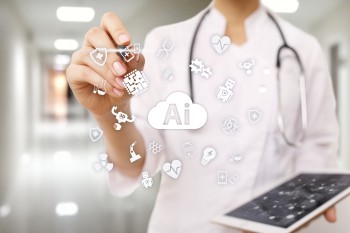Artificial Intelligence (AI) has received its fair share of hits. Or "fear share." The more AI grows, the more people (ordinary people, government people, industry people) grapple with the potential promised by AI — for better and for worse. AI-generated deep-fakes? That probably falls in the “for worse” column. AI for agriculture, cyberthreat management and health care? That’s definitely in the “for better” column. As for AI systems designed specifically to improve health care outcomes in rural spaces where access to specialists is limited or non-existent? That falls into the “even better” column.
In October 2023, the White House released an Executive Order directing federal agencies to develop approaches to AI. This week, the Office of Management and Budget released a memorandum directing federal agencies to appoint chief AI officers, develop compliance plans and “use case inventories,” among other measures. The FCC recently ruled that AI-generated telephone calls are “artificial voices” under the Telephone Consumer Protection Act. The action gives the FCC authority to act against calls like those made to New Hampshire voters recently using an AI generated voice that sounded an awful lot like President Joe Biden. The Federal Trade Commission has proposed rules to address the use of AI in impersonation cases. Cybersecurity experts are warning that generative AI will be able to wreak havoc with devastating breaches; at the same time, cybersecurity experts are also predicting that “white hat” experts can harness AI to predict harms and build defenses against them. It’s an arms race waged in ones and zeroes.
And then there’s health care.
About 18% of the U.S. population live in rural areas. But rural spaces are home to 65% of health care provider shortage areas. That, coupled with health disparities between rural and urban spaces (rural areas see higher incidences of adverse health conditions), means those shortages can be the difference between access to physicians who can treat acute or chronic conditions, and delayed intervention that cascades adverse outcomes.
AI health care is not intended to replace doctors. Instead, it is a tool to assist physicians in triage and treatment. Consider that health care produces immense data sets that can be used to not only treat but also predict disease and other conditions. Interventions guided by AI management can accelerate and summarize findings for physician review, or help doctors prioritize patients for care. AI review of X-ray, CT scans and MRI images can prioritize patients for treatment and suggest intervention plans that require physician review and approval but not more time-consuming initial creation by doctors. Remote patient monitoring has been deployed to allow physicians to keep an eye on distant patients. AI can sort and analyze data and alert healthcare providers when pre-set triggers are reached. Chatbots enabled by large language models (LLMs) can effectively interview patients and create a composite interview image before the actual patient/physician interaction begins. In doing so, AI-aided diagnostics can free-up physician time and resources.
AI-enabled assistants can also cross-check symptoms against other factors that might not be known to the doctor. One published example relates an instance in which a patient’s address and zip code revealed proximity to a lake prone to (and known to) be a haven for infectious bacteria. The link enabled rapid diagnosis and treatment of the patient who, upon interview, recalled swimming in the lake. Although the information was accessible, the link between patient location and infectious conditions likely would have gone unnoticed without AI intervention.
Research literature on AI and rural healthcare is beginning; one can expect these reports to address not only LLMs and deep learning, but evolving work on data quality and security and willingness of doctors to adopt AI strategies.
The robots won’t replace doctors, but they may well soon become the voice that says, “The doctor will see you now.”


